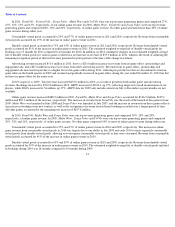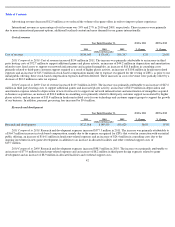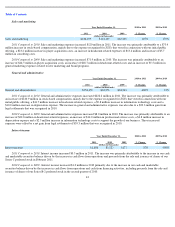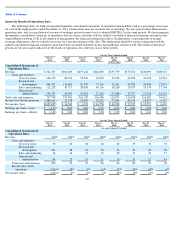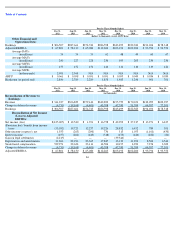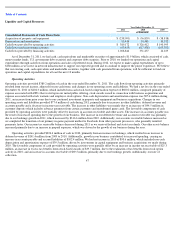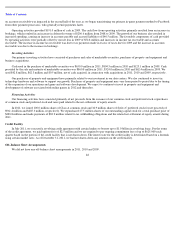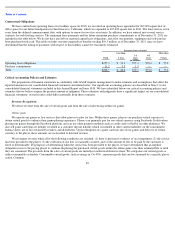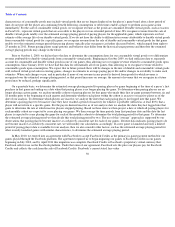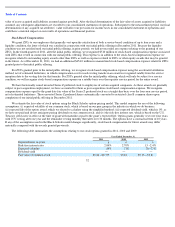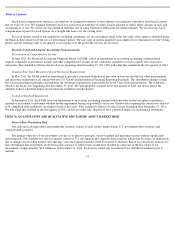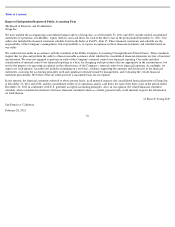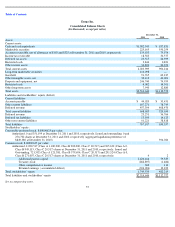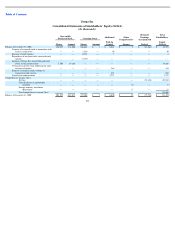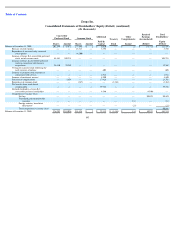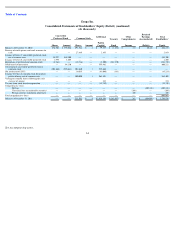Zynga 2011 Annual Report Download - page 55
Download and view the complete annual report
Please find page 55 of the 2011 Zynga annual report below. You can navigate through the pages in the report by either clicking on the pages listed below, or by using the keyword search tool below to find specific information within the annual report.
Table of Contents
of a Facebook Credit is $0.10. For each Facebook Credit purchased by our players and redeemed in our games, Facebook remits to us $0.07,
which is the amount we recognize as revenue. We recognize revenue net of the amounts retained by Facebook because we do not set the pricing
of Facebook Credits sold to the players of our games. Prior to the implementation of Facebook Credits in our games, players could purchase our
virtual goods through various widely accepted payment methods offered in the games and we recognized revenue based on the transaction price
paid by the player.
We estimate chargebacks from Facebook and our third-party payment processors to account for potential future chargebacks based on
historical data and record such amounts as a reduction of revenue.
Advertising
We have contractual relationships with agencies and brokers for advertisements within our games. We recognize advertising revenue as
advertisements are delivered to customers as long as evidence of the arrangement exists (executed contract), the price is fixed and determinable,
and we have assessed collectability as reasonably assured. Certain branded virtual goods and sponsorships are deferred and recognized over the
estimated average life of the branded virtual good or as the branded virtual good is consumed, similar to online game revenue.
We generally report our advertising revenue net of amounts due to advertising agencies and brokers because we are not the primary obligor
in our arrangements, we do not set the pricing, and we do not establish or maintain the relationship with the advertiser. Certain sponsorship
arrangements that are directly between us and end advertisers are recognized gross equal to the price paid to us by the end advertiser since we are
the primary obligor and we determine the price.
Income Taxes
We account for income taxes using an asset and liability approach, which requires the recognition of taxes payable or refundable for the
current year and deferred tax liabilities and assets for the future tax consequences of events that have been recognized in our financial statements
or tax returns. The measurement of current and deferred tax assets and liabilities is based on provisions of enacted tax laws; the effects of future
changes in tax laws or rates are not anticipated. If necessary, the measurement of deferred tax assets is reduced by the amount of any tax benefits
that are not expected to be realized based on available evidence. We account for uncertain tax positions by reporting a liability for unrecognized
tax benefits resulting from uncertain tax positions taken or expected to be taken in a tax return. We recognize interest and penalties, if any,
related to unrecognized tax benefits in provision for income taxes.
Business Combinations
In line with our growth strategy, we have completed acquisitions to expand our social games and mobile offerings, obtain employee talent,
and expand into new markets. We account for acquisitions of entities that include inputs and processes and have the ability to create outputs as
business combinations. We allocate the purchase price of the acquisition to the tangible assets, liabilities and identifiable intangible assets
acquired based on their estimated fair values. The excess of the purchase price over those fair values is recorded as goodwill. Determining the
fair value of such items requires judgment, including estimating future cash flows or estimating the cost to recreate an acquired asset. If actual
results are lower than estimates, we could be required to record impairment charges in the future. Acquired intangible assets are amortized over
their estimated useful lives. Intangible assets with indefinite lives are not amortized but rather tested for impairment annually, or more frequently
if circumstances exist which indicate an impairment may exist.
Acquisition-related expenses and restructuring costs are expensed as incurred. During the one-year period beginning with the acquisition
date, we may record certain purchase accounting adjustments related to the fair
51


